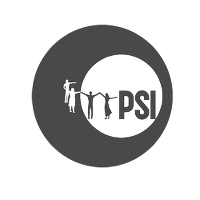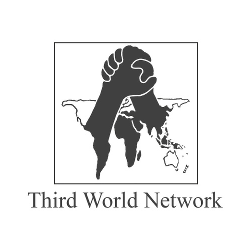By Ignacio Saiz, Center for Economic and Social Rights (CESR)
Over the seven decades since the adoption of the Universal Declaration of Human Rights (UDHR), human rights have become deeply embedded in the discourse, norms and structures of global governance. Promoting human rights is one of the foundational purposes of the United Nations. [fn] Charter of the United Nations, Chapter 1, Art. 1. [/fn] Human rights agreements - and disagreements - have profoundly shaped the dynamic of relations between States, as well as between governments and their people. The principles affirmed in the UDHR represent the closest humanity has come to an agreed universal framework of standards for how such relations should be governed.
The rights articulated in the UDHR have since been codified and amplified in a comprehensive system of international treaties and soft-law standards, as well as in national constitutions and legal frameworks across the globe. An elaborate institutional infrastructure has been developed to oversee and enforce these standards, from national human rights commissions to regional courts and UN treaty monitoring bodies. Human rights are thus an integral part of both the software and hardware of contemporary global governance.
Human rights are explicitly inscribed in the purpose, vision and normative foundations of the 2030 Agenda for Sustainable Development and the SDGs. [fn] The SDGs “seek to realize the human rights of all” and “envisage a world of universal respect for human rights and human dignity”; they are “grounded in the Universal Declaration of Human Rights, international human rights treaties… [and] informed by other instruments such as the Declaration on the Right to Development”. See UN (2015), preamble and paras. 8 and 10. [/fn] This grounding of Agenda 2030 in human rights standards – a hard-won civil society victory – represents an enormously significant evolution in the historically uneasy relationship between human rights and development in the global governance arena. [fn] Alston and Robinson, eds. (2005). [/fn] Whereas the Millennium Development Goals (MDGs) undercut human rights, the SDGs underscore them, explicitly requiring that the goals be implemented in a manner consistent with States’ obligations under international law to respect, protect and fulfil human rights. [fn] UN (2015), para. 18. [/fn]
The hard wiring of human rights in the SDGs is a potentially powerful corrective to the serious governance deficits which have emerged around the 2030 Agenda since 2015. First, because human rights standards draw clear red lines around governmental discretion to pick and choose how the goals are interpreted and implemented. As a comprehensive, universally agreed and legally binding framework addressing the multiple dimensions of human well-being, human rights provide clear normative orientation on how development outcomes, policy efforts and financing should be designed and assessed, as well as how gaps, ambiguities or trade-offs should be resolved. For example, efforts to operationalize the laudable but vague aspiration of “leave no one behind” can draw on widely ratified agreements on combating discrimination on grounds such as gender, race, disability and indigenous status. Several governmental, UN and civil society initiatives have illustrated the practical implications - and transformative impacts - of a rights-centred approach to establishing social protection floors (SDG 1), [fn] See e.g. the Social Protection and Human Rights web platform developed by the United Nations Research Institute on Social Development (UNRISD) (https://socialprotection-humanrights.org); and the Global Coalition for Social Protection Floors made up of over 100 CSOs campaigning for “social protection floors for everyone as a universal rights-based development goal” (www.socialprotectionfloorscoalition.org/). [/fn] ensuring maternal and child health (SDG 3) [fn] See e.g., OHCHR et al. (2015). [/fn] and reducing economic inequality (SDG 10). [fn] See e.g., CESR (2016). [/fn]
Second, human rights mechanisms and processes can help to buttress the weak SDG accountability architecture. National human rights institutions, for example, have a central role to play in monitoring SDG progress, aligning national targets and indicators with human rights, facilitating the participation of rights-holders, and hearing complaints from those affected by unjust policies and practices. [fn] Global Alliance of National Human Rights Institutions (GANHRI) (2017). [/fn] UN and regional human rights oversight bodies are also integrating the SDGs in their periodic country review processes, seeking synergies with SDG reporting. [fn] UN Committee on Economic, Social and Cultural Rights (2019). [/fn] These mechanisms address crucial dimensions of accountability that are underserved by the SDG review system, such as transnational and corporate accountability. Treaty bodies, for example, are increasingly holding States answerable for how their aid, trade, tax and investment policies affect human rights beyond their borders, [fn] See, e.g., Committee on the Elimination of Discrimination against Women (CEDAW (2016), which called on Switzerland to undertake periodic impact assessments of the extraterritorial effects of its financial secrecy and corporate tax policies on women’s rights. [/fn] and for their duty to protect against corporate human rights abuses. [fn] See Committee on Economic, Social and Cultural Rights (2017), which builds on the UN Guiding Principles on Business and Human Rights. See also UN Working Group on Business and Human Rights (2017). [/fn]
Of course, human rights can be as much a casualty of global governance power dynamics as a corrective for them. For all the convergence on paper, in practice human rights continue to be a contested topic in international development forums. Governments at the High Level Political Forum (HLPF) can still be heard arguing that reproductive and LGBTQI rights do not belong on the development agenda, that there is no such thing as the right to development, and that international cooperation is a matter of discretion, not a human rights duty. Such tensions often play out along North-South fault lines, a legacy of the long history of misuse of human rights by powerful countries as justification for aid conditionality, economic sanctions and even military intervention. Human rights are also constrained by their limited enforceability in comparison to other bodies of international law, for example bilateral investment treaties which have been invoked in rights-restricting ways. [fn] Columbia Center for Sustainable Investment and UN Working Group on Business and Human Rights (2018). [/fn] Such challenges are compounded by the current rise of nationalism, which has seen some governments overtly rejecting human rights values as a basis for international relations and undermining the multilateral system on which human rights rests.
The backlash against human rights as an ethical framework for global governance has perhaps never been so evident. Yet at no time since the last world war has the need for such a framework been so acute. Human rights – contested, constrained and critiqued, yet collectively endorsed and continuously evolving - is the closest we have. If anchoring the SDGs in human rights has been a paramount concern for feminist, indigenous, disability rights and other civil society activists worldwide, it is because of their power to reframe the purpose of sustainable development as the pursuit of substantive equality, justice and accountability.
If human rights are to help the SDGs “transform our world”, three fundamental steps are needed to disrupt the selectivity and hypocrisy still surrounding the issue in the sphere of global development governance. First, human rights must be articulated and understood holistically, encompassing their economic, social and environmental dimensions, and recognizing their relevance to the entirety of the 2030 Agenda, not just Goal 16 on peaceful and just societies. Second, spaces must be not only defended but expanded for those most affected by development injustice to hold those responsible to answer for their actions and omissions through the broader ecosystem of accountability that human rights opens up. Third, governments must adopt a radically different approach to international cooperation and global partnership founded on the recognition of their common but differentiated responsibilities to respect, protect and fulfil human rights within and beyond their borders.
Ignacio Saiz is Executive Director of the Center for Economic and Social Rights (CESR).
Alston, Philip and Robinson, Mary, eds. (2005): Human Rights and Development: Towards Mutual Reinforcement. Oxford: Oxford University Press.
CESR (2016): From Disparity to Dignity. New York.
www.cesr.org/sites/default/files/disparity_to_dignity_SDG10.pdf
Columbia Center for Sustainable Investment and UN Working Group on Business and Human Rights (2018): Impacts of the International Investment Regime on Access to Justice, New York/Geneva.
www.ohchr.org/Documents/Issues/Business/CCSI_UNWGBHR_InternationalInvestmentRegime.pdf
Global Alliance of National Human Rights Institutions (GANHRI) (2017): National Human Rights Institutions Engaging with the Sustainable Development Goals (SDGs). Geneva.
https://nhri.ohchr.org/EN/News/Documents/GANHRI_NHRIs%20engaging%20with%20the%20SDGs.pdf
OHCHR et al. (2015): Summary Reflection Guide on a Human Rights-Based Approach to Health. Geneva.
www.ohchr.org/Documents/Issues/Women/WRGS/Health/RGuide_HealthPolicyMakers.pdf
UN (2015): Transforming our world: the 2030 Agenda for Sustainable Development. New York (UN Doc. A/RES/70/1).
https://sustainabledevelopment.un.org/post2015/transformingourworld
UN Committee on Economic, Social and Cultural Rights (2019): The Pledge to Leave No-One Behind: The International Covenant on Economic, Social and Cultural Rights and the 2030 Agenda for Sustainable Development. Geneva (UN Doc. E/C.12/2019/1).
www.ohchr.org/Documents/HRBodies/CESCR/E_C_12_2019_1.docx
UN Committee on Economic, Social and Cultural Rights (2017): General Comment No. 24 (2017) on State obligations under the ICESCR in the context of business activities. Geneva.
www.refworld.org/docid/5beaecba4.html
UN Committee on the Elimination of Discrimination against Women (CEDAW) (2016): Concluding Observations on Switzerland (2016)
https://tbinternet.ohchr.org/_layouts/treatybodyexternal/Download.aspx?symbolno=CEDAW%2fC%2fCHE%2fCO%2f4-5&Lang=en
UN Working Group on Business and Human Rights (2017): The Business and Human Rights Dimension of Sustainable Development: Embedding “Respect, Protect and Remedy” in SDGs Implementation. Geneva.
www.ohchr.org/Documents/Issues/Business/Session18/InfoNoteWGBHR_SDGRecommendations.pdf








